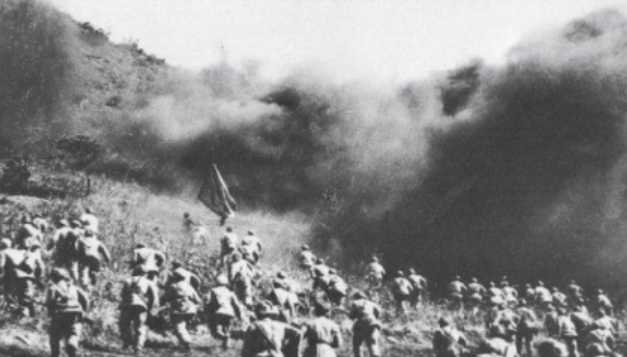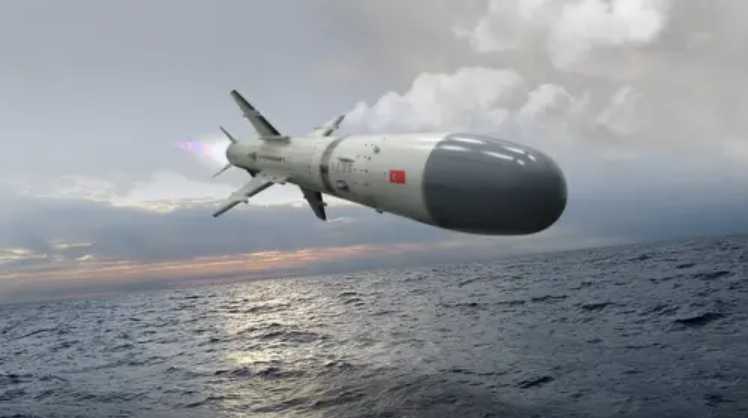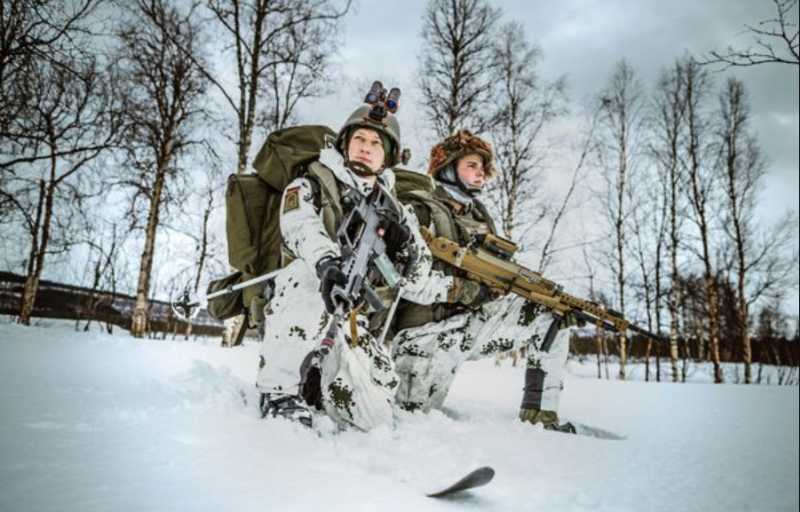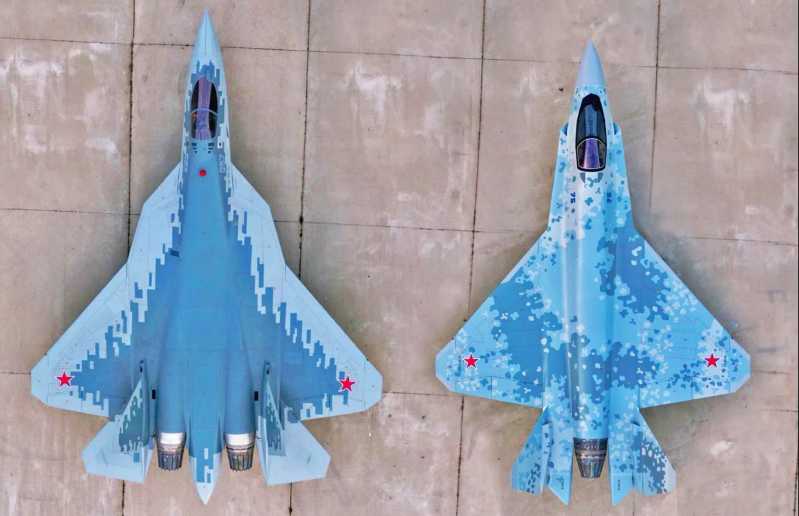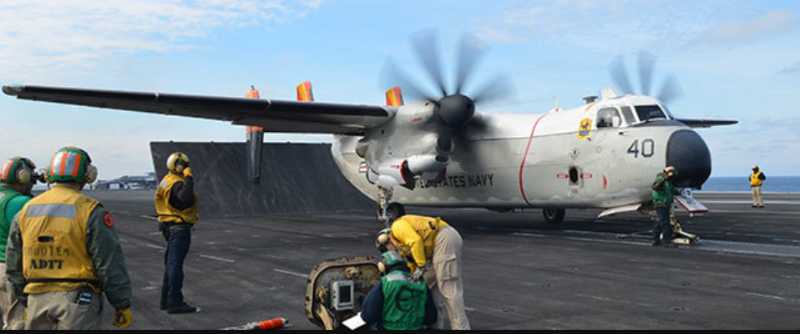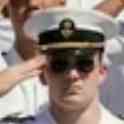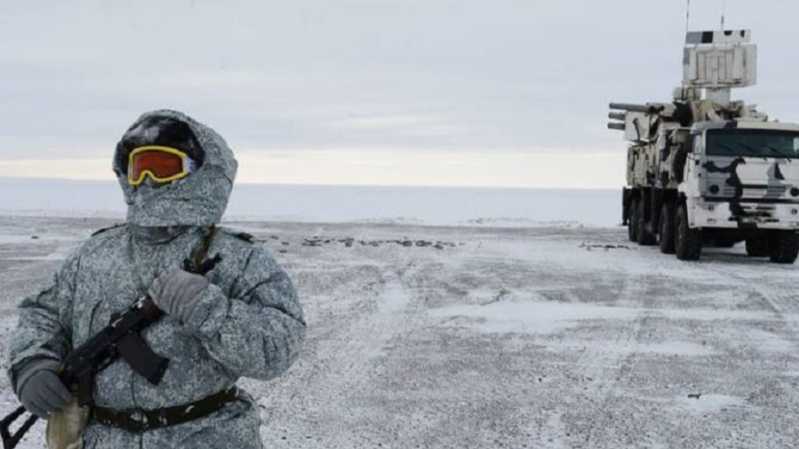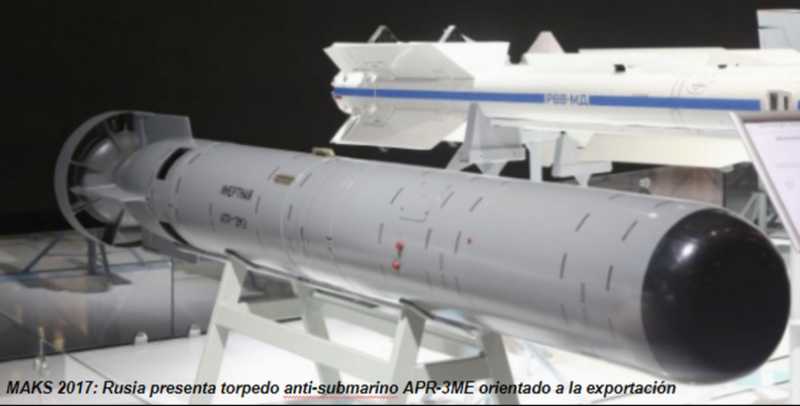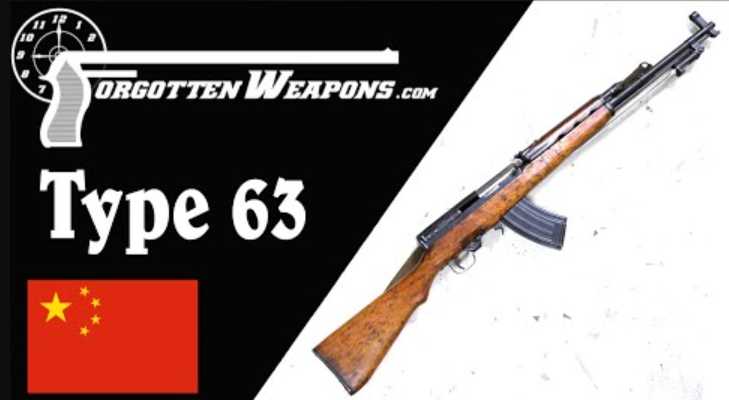In the early days of the Korean War, the U.S. military, after successfully landing in Incheon, marched northward. At that time, MacArthur, the commander-in-chief of the "United Nations Forces", held a press conference in Tokyo, Japan, and made the famous statement that "the war will end before Thanksgiving." When asked about the Chinese government’s recent statement that it might send troops to North Korea, MacArthur replied that even if China really joined the war, it would be a small-scale deployment at most. "If they try to march to Pyongyang, it will inevitably bring about a tragic massacre." MacArthur asserted. He also pointed out that in history, the Chinese army has always been vulnerable to the armies of Western countries.
Amid the general optimism of MacArthur and the U.S. military, the Chinese People’s Volunteer Army "was vigorous and high-spirited" and crossed the Yalu River to start the battle of "resisting the United States and aiding Korea, and defending the country." So, how did the US military view its first encounter with the People’s Volunteer Army on the Korean battlefield?

Misjudgment of the US military high-level officials
In fact, there are not only "optimists" represented by MacArthur in the US military, but also a group of generals who are somewhat wary of China’s aid to Korea. Major General David Badawi, commander of the 7th Infantry Division of the US Army Barr was the last head of the US military advisory group in China and personally observed the combat effectiveness of the Chinese People’s Liberation Army in the late period of the Chinese Civil War. Therefore, when US military intelligence first showed that Chinese troops appeared in the northern part of the Korean Peninsula, Badawi immediately contacted Major General Charles Willoughby, Chief of the Second Department of the Supreme Commander of the Allied Powers in Japan and MacArthur’s chief intelligence officer, and proposed to introduce what he knew to the staff department of the Supreme Commander, write some guiding documents for the US commanders in the Korean battlefield, and provide advice for them to formulate combat plans. But Willoughby was too lazy to even pay attention to Badawi and didn’t even reply. Because Badawi’s behavior was obviously a contrast to Willoughby’s Lobi’s intelligence department was not doing a good job; what’s more, what Badawi wanted to say was undoubtedly at odds with MacArthur’s views.
In late October 1950, the atmosphere of the US Eighth Army on the front line was relaxed. Some troops had actually begun to clean up their combat equipment and prepare to ship them to Japan. Some officers of the troops even threw away their combat uniforms and only kept military uniforms in their luggage to wear at the triumphal parade in Tokyo. According to tradition, the 1st Cavalry Division of the US Army is the unit that walks at the forefront of the parade. The soldiers have to wear cavalry-style yellow scarves, and they are beautiful parade-specific scarves. On October 20, the US military occupied Pyongyang. On the 21st, MacArthur went to Pyongyang to attend the celebration ceremony and mocked in public: "Kim Dae-ya (Kim Dae-ya) Buck Tooth, the nickname given by the US military to North Korean leader Kim Il-sung, went away?" MacArthur chatted with the soldiers of the 1st Cavalry Division and asked who had been in North Korea since the outbreak of the war? Among the more than 200 US soldiers surrounding him, only four had experienced the fierce fighting in the Busan defense circle. The others were later reinforcements, and they believed that the worst stage of the war had long been over. The US soldiers made bets on when they could take a ship back to Japan. On the last day in Pyongyang, the officers and soldiers of the 1st Cavalry Division collectively watched the solo show of comedy master Bob Hope brought by the USO. The next day, the division went to the Unsan area.
At that time, MacArthur completely ignored the "restraint line" ("line "ofrestraint"), and the troops were pointed directly at the Yalu River. The mountains in the northern part of the Korean Peninsula were rugged and undulating, which not only greatly affected the progress of the US mechanized forces, but also made it difficult to keep up with the logistical supply, and even the communication was on the verge of interruption. For example, Lieutenant Colonel George Russell of the 2nd Infantry Division of the 8th Army of the US Army said: "The worst thing about the Korean War is Korea itself... In Korea, there are mountains on the other side of every mountain." However, MacArthur claimed that he was well versed in "Eastern philosophy." He publicly stated: "Asians respect those who are strong and unwavering in their eyes." American pilot Mike Lynch once flew a special plane for the commanders of the 8th Army, Walker and Ridgway, and observed most of the senior officers of the US military in the Korean War at close range. Lynch revealed a major secret of this war in one sentence: "MacArthur claimed to know the mentality of Orientals very well. We may understand the wealthy businessmen in Manila, the cowardly and corrupt generals in Chiang Kai-shek’s army, and the humble and polite Japanese in Tokyo. But we knew nothing about the North Koreans who fought tenaciously and the Chinese who fought bravely and defeated Chiang Kai-shek. This was a classic mistake and violated the basic principle of military command - know your enemy. "
As for Ridgway, he criticized MacArthur’s stubbornness and insistence on going north all his life. 40 years later, Ridgway still wrote in his memoirs: "There is one thing that I find most difficult to understand - and as a commander, it is the most difficult to forgive - the Tokyo headquarters ignored the situation in which our officers and soldiers had to fight. ”
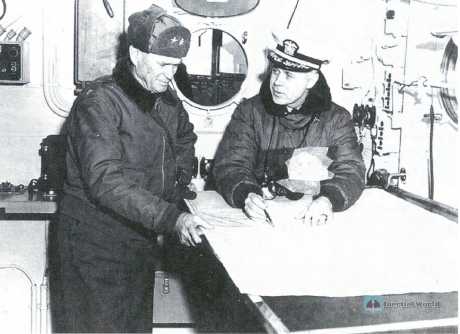
The First Battle of Yunshan
From the end of October 1950, the U.S. military found that the signs of Chinese military activities north of the Yalu River suddenly intensified. The U.S. military reconnaissance aircraft that violated our airspace were constantly intercepted by our military’s anti-aircraft artillery over the northeast. U.S. Lieutenant W.P. Garton once recalled the scene of his first violation of the Chinese border and flying over the Yalu River for night reconnaissance in an F6 fighter: "For an hour, I circled over the Korean side of the Yalu River, counting the number of trucks that passed the Yalu River Bridge from Andong to Sinuiju. The trucks drove out of the brightly lit Andong with their headlights on; halfway up the bridge, the trucks collectively turned off their lights and quietly drove through the dark Sinuiju. The traffic line was almost an uninterrupted torrent. Within an hour, I observed more than 150 trucks passing the Yalu River Bridge. "A few days later, Garton counted more than 200 trucks within an hour during night reconnaissance.
Immediately afterwards, another US reconnaissance plane discovered that there were signs of a large number of people moving on the frozen Yalu River. Colonel Percy Thompson, the intelligence staff of the US 1st Army, directly warned Colonel Hal Edson, the commander of the 8th Cavalry Regiment, to be careful of the Chinese army joining the war. Thompson wrote in his diary: "The senior officers were intoxicated with joy. "Major General Willoughby, who was far away in Tokyo, turned a blind eye to this intelligence. He asserted that China did not have the transportation capacity to transport a large army to North Korea.
On the evening of October 25, 1950, the Chinese People’s Volunteer Army fired the first shot into North Korea, and our 116th Division hit the South Korean 1st Division. Until this time, the US generals were still dreaming of ending the war within a few weeks. Major General Willoughby determined that the Korean officers and soldiers who participated in the war were the former Chinese People’s Liberation Army officers and soldiers in the Korean People’s Army sequence. Major General Laurence "Dutch" Keiser, commander of the 2nd Infantry Division of the US Army, was still talking about it when he was meeting with his staff: "We are all going home, we will be home soon, and we will be home before Christmas. We have orders.

On the afternoon of October 31, the 8th Cavalry Regiment of the 1st Cavalry Division of the US Army arrived in Yunshan in a swagger. Sergeant "Pappy" Miller of the 3rd Battalion led his platoon to patrol 5 miles north of Yunshan City and met an old Korean farmer on the way. After questioning, it was learned that thousands of Chinese soldiers had entered the area. Sergeant Miller hurried back to report the news, but the superior intelligence officer despised it. The US military did not believe that the Chinese army would appear in this area at all.
Lieutenant Colonel Harold "Johnny" Johnson, the former commander of the 3rd Battalion of the 8th Cavalry Regiment and the commander of the 5th Cavalry Regiment at the time, quickly arrived at the headquarters of the 3rd Battalion. Johnson was a survivor of the "Bataan Death March" during the Pacific War. He had survived three years in a Japanese prisoner-of-war camp in the Philippines and was an experienced officer of the division. Johnson noticed at a glance that his old troops were scattered in the rice fields, and no fortifications had been dug. Johnny expressed his concerns to Lieutenant Colonel Robert Ormond, who succeeded him. Ormond had been a staff officer in Tokyo before and had no experience in frontline command operations. Ormond said that the troops could not be at risk of being attacked. Johnson said angrily: "You should spread these people out of the valley and deploy them on high ground! It is too vulnerable to let them stay in such a place! Once you are hit, you can’t resist at all!" Ormond always refused to listen to the opinions of experienced officers. It was quiet at night, but all the US troops woke up the next day to find that the surrounding mountains and forests were on fire. The US military determined that the fire was set by the Chinese army to cover their whereabouts to avoid being discovered by US aerial reconnaissance.
On November 1, the 1st Cavalry Division of the US Army finally recognized the judgment of Lieutenant Colonel Johnson and prepared to withdraw the troops from the Unsan area. Major General Hap Gay, the commander of the 1st Cavalry Division, served as General Patton’s chief of staff during World War II. He knew that Tokyo knew nothing about the Chinese army and the situation on the Korean Peninsula. MacArthur’s contempt for his opponent would inevitably lead to disaster. Regarding MacArthur’s "Christmas home" talk, Gay said: "It’s really stupid. The whole effect of this talk is to make the troops excited about going home and not care about anything." But his superiors rejected Gay’s request and ordered him to stay in Unsan and not to retreat.
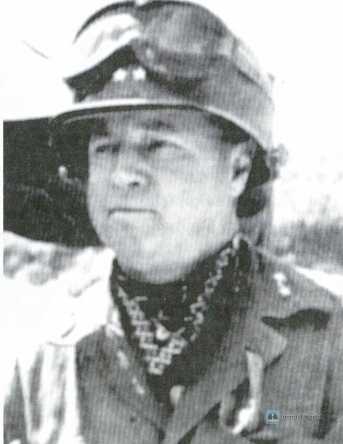
That afternoon, Gay received intelligence from aerial reconnaissance that two columns of Chinese troops were found 5 miles away. Gay ordered the field artillery to deploy on the spot and again requested the 8th Cavalry Regiment to retreat, but was rejected again. As dusk approached, the 5th Cavalry Regiment moved north to try to contact the 8th Cavalry Regiment, and ran into the blocking position of the Chinese People’s Volunteer Army. It was just getting dark at this time. The 5th Cavalry Regiment of the US Army described itself as being caught in a bitter battle to save its life, and the opponent was a well-trained and experienced army.
As night fell on November 1, the 115th and 116th Divisions of the Chinese People’s Volunteer Army surrounded the 8th Cavalry Regiment of the US Army from three sides. At 22:00 in the evening, the Volunteer Army first defeated the 15th Regiment of the 1st Division of the Korean Army 2 miles away. 20 minutes later, the 1st Battalion of the 8th Cavalry Regiment of the US Army, deployed in the northernmost part, reported: "The sound of bagpipes was heard. The U.S. military didn’t know that it wasn’t a bagpipe, but the charge of the Chinese People’s Volunteer Army.
Quite a lot of U.S. troops were ordered to train Korean soldiers, and the Korean soldiers who were trained generally didn’t know English and couldn’t communicate with the American instructors. At 22:30, the Chinese People’s Volunteer Army wiped out the 1st Battalion of the 8th Cavalry Regiment of the U.S. Army. The Korean soldiers assigned to the battalion collapsed in front of the first wave of the Volunteer Army’s charge. The remaining U.S. troops could only follow the footsteps of the Korean army and run away. Later, a surviving U.S. soldier recalled: "It was like we were participating in a race." The battalion’s structure completely collapsed, and the battalion headquarters tried to organize a second line of defense to resist, but it couldn’t even stop the fleeing defeated soldiers. Many years later, American military scientist Walter Helms wrote the official war history "The United States Army in the Korean War", describing this section as follows: "In a moment, our station was riddled with holes, and the Chinese seemed to have fallen from the sky. They killed anyone they saw and stabbed them to death with bayonets." The US military was dead and wounded everywhere. Lieutenant Colonel Jack Millikin, commander of the 1st Battalion, quickly organized 10 trucks with two tanks to cover the casualties. One mile south of Yunshan, the Volunteer Army successfully ambushed the convoy and wiped it out cleanly. Lieutenant Ben Boyd, the platoon leader of the 2nd Platoon of Company B who commanded the convoy, was lying in a pile of corpses. When the Volunteer Army soldiers were cleaning the battlefield, he decisively pretended to be dead and escaped.
23:00, the 115th Division of the Chinese People’s Volunteer Army launched a fierce attack on the 2nd Battalion of the 8th Cavalry Regiment of the US Army on the west side of Yunshan. Like the fate of the 1st Battalion, the position of the 2nd Battalion was also easily captured by the Volunteer Army. 20 minutes later, the Volunteer Army of the two battalions began to attack the 3rd Battalion of the 8th Cavalry Regiment of the US Army on the south side of Yunshan. At that time, the Chinese People’s Volunteer Army opened several breakthroughs from the US Army’s defense line almost at the same time, and the US Army retreated in panic. This time it took only 10 minutes for the Volunteer Army soldiers to rush to the outside of the headquarters of the 3rd Battalion of the US Army. The surviving US Army hastily organized a new defense circle, and used 3 tanks in the center of the position to hold the line, hoping to survive the night. The battalion commander, Lieutenant Colonel Omond, was killed by the Volunteer Army soldiers on his way to the regiment headquarters. He was seriously injured by a grenade, and his subordinates fled in all directions, and no one provided rescue. Omond was found by the Volunteer Army after dawn, and he had already died.
At the same time, the C Company of the 99th Field Artillery Battalion of the US Army suffered a devastating blow from the Chinese People’s Volunteer Army. The US artillery retreated hastily, and just one mile to the south, it ran into the ambush circle of the Volunteer Army. According to the memories of the surviving US soldiers, the Chinese People’s Volunteer Army was equipped with American Thompson submachine guns that were obviously captured from the Kuomintang army. Of the 180 US soldiers in the artillery company, only a few survived and retreated into the new defense circle of the 3rd Battalion in the north.
During the daytime of November 2, a US helicopter tried to land in the new defense circle, but was driven back by the firepower of the Volunteer Army. There were also scattered US soldiers who had been separated last night who escaped into the defense circle, but the defense circle was surrounded by the Chinese People’s Volunteer Army. The US military launched an air strike with B26 bombers, but it had little effect. The casualties of the US troops in the encirclement continued to increase, and the ammunition was gradually exhausted. A
US artillery calibration plane flew in and dropped supplies, but it was just a drop in the bucket. That afternoon, the volunteers began earthwork, digging communication trenches toward the U.S. defense circle. The U.S. commander made a decision in panic: leave all the wounded behind, and all those who can move will disperse to break out. Major General Gay, commander of the 1st Cavalry Division of the U.S. Army, ordered the 5th Cavalry Regiment to speed up and rescue the 8th Cavalry Regiment. As a result, the 5th Regiment also ran into the ambush circle of the Chinese People’s Volunteer Army. After a battalion suffered 250 casualties, it was forced to retreat. The U.S. artillery calibration aircraft flew over the Yunshan defense circle again and dropped a written order, requiring the surviving U.S. troops to break out as soon as possible.
Night fell again, and the Chinese People’s Volunteer Army launched another fierce attack. The stubborn U.S. military fired at the volunteers with the only remaining vehicle-mounted bazooka rocket launchers. The explosion illuminated the firing range of the U.S. machine guns. The U.S. military even picked up Thompson submachine guns from the bodies of the Volunteer soldiers and continued to fight. By the morning of November 4, there were less than 50 U.S. troops still able to fight in the defense circle. The last tank also ran out of power, the radio could not be used, and the US military’s communication with the outside world was interrupted.

In the early morning, the Chinese People’s Volunteer Army retreated slightly. Sergeant Bill Richardson led a four-man team out of the defense circle and explored the retreat route to the east. They found a way along the nearby river and hurried back to the defense circle to report the news. At 15:00 in the afternoon, the US military began to break out: 150 wounded were abandoned in the defense circle on the spot, and Sergeant Richardson was ordered to lead 60 US soldiers who were still able to move to quietly slip out of the defense circle and break out along the river. In the end, only about 20 US soldiers escaped the encirclement and search of the Chinese People’s Volunteer Army and escaped back to the US military front. Richardson was also captured by our army and spent two and a half years in a prisoner-of-war camp. The 8th Cavalry Regiment of the 1st Cavalry Division had a total of 2,400 people. According to the statistics of the US military, 800 people were killed and more than 1,000 were injured. The entire regiment collapsed on the first night of the battle. Among them, the 3rd Battalion had more than 800 people, and only 200 survived.
The huge shock to the US military in the first battle of Yunshan
The Battle of Yunshan was the biggest defeat suffered by the US military in the Korean battlefield so far. The US military history described that "the Chinese army seemed to appear and disappear like ghosts, and dealt a devastating blow to an elite unit of an elite division (of the US military) in one fell swoop." The spokesman of the 1st Cavalry Division of the US military compared this battle to the famous Battle of the Little Big Horn in American history. On June 25, 1876, the U.S. Army fought a great battle with the Sioux Indians near the Little Bighorse River in Montana. The Indians wiped out the 7th Cavalry Regiment of the 1st Cavalry Division of the U.S. Army, which was once famous in the Civil War, and killed George Armstrong Custer, a famous U.S. cavalry general known as the "Son of the Morning Star". This battle is a heavy shadow in the history of the U.S. military and has extremely important symbolic significance in American culture. The U.S. military spokesman used this as a comparison, which shows how heavy the blow the Chinese People’s Volunteer Army dealt to the U.S. military and how shocking it was.
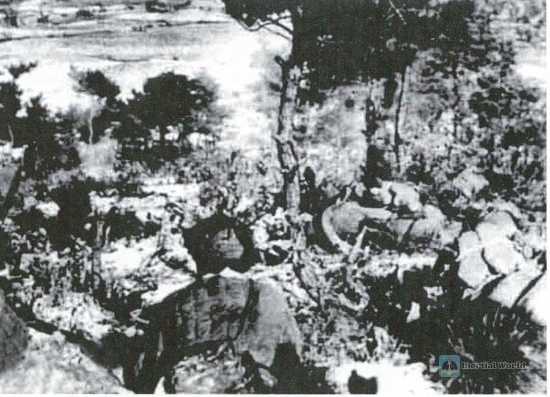
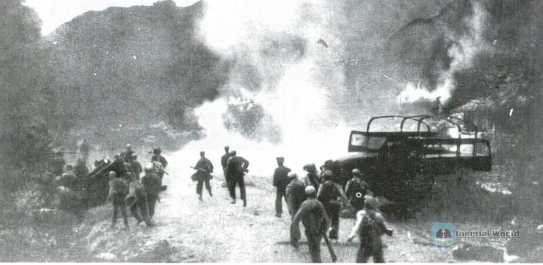
Even so, MacArthur, who was in Tokyo, still tried every means to cast smoke bombs and tried his best to turn a blind eye. Politicians in Washington were deeply nervous about the appearance of Chinese troops on the Korean battlefield, fearing that this was a signal of a full-scale war between China and the United States. On November 3, 1950, the US Joint Chiefs of Staff called MacArthur and asked him to respond to "the impact of the Chinese Communist Army’s blatant interference in the Korean situation." This issue became the focus of the conflict between MacArthur and Washington. Having just been caught off guard by the Chinese People’s Volunteer Army, MacArthur quickly regained his confidence. After the Battle of Unsan, Major General Walton Walker, commander of the US 8th Army, quickly sent a telegram to MacArthur: "The ambushes and raids on us were carried out by a well-organized and well-trained fresh force, including the Chinese Communist Army."
Faced with such an unmistakable report, MacArthur, the supreme commander, remained unmoved. He responded to the questioning of the Joint Chiefs of Staff with a light-hearted attitude. MacArthur said that the Chinese army entered North Korea to help the Korean People’s Army "maintain a nominal foothold in North Korea" and let it "rescue a little legacy from the ruins." MacArthur continued to advocate the entry of troops into the Yalu River. At the same time, Walker suggested that MacArthur hold on until the beginning of next spring and never continue the offensive in the winter of the Korean Peninsula. On November 6, MacArthur issued a communiqué in Tokyo, saying that the Korean War was actually over because the "trap" north of Pyongyang had been triggered. MacArthur did not think about which side "triggered the trap".
MacArthur put pressure on Washington to lift restrictions on himself and agree to the US military bombing the Yalu River Bridge because the Chinese army used the Yalu River Bridge to "threaten the results of the complete annihilation of our army." U.S. Secretary of State Dean Acheson lamented that control of the war had fallen into the hands of the Chinese, and then MacArthur; as for the U.S. government, Acheson believed that "he had no influence on the former and a negligible influence on the latter."
The U.S. military history believes that the Battle of Unsan was the last chance for the U.S. military to stop its actions on the Korean Peninsula in time and avoid a larger-scale war with China: but the U.S. side failed to seize this opportunity, as Acheson later wrote in his memoirs: "We sat there like paralyzed rabbits, waiting for MacArthur to drag us into this nightmare." Then, by the end of November, the Chinese People’s Volunteer Army launched its first campaign, which shocked the U.S. military unprecedentedly. Faced with the overwhelming defeat on all fronts, Acheson had another more classic description: "The offensive launched by the Chinese army in North Korea has caused the US military to suffer the worst defeat since the Second Battle of Bull Run." The Second Battle of Bull Run was a classic battle in the early days of the American Civil War, which ended in a disastrous defeat for the Northern Union Army, and Washington was shrouded in a cloud of sorrow. This shows how heavy the blow the Chinese People’s Volunteer Army dealt to the US military and how great the shock it brought.


